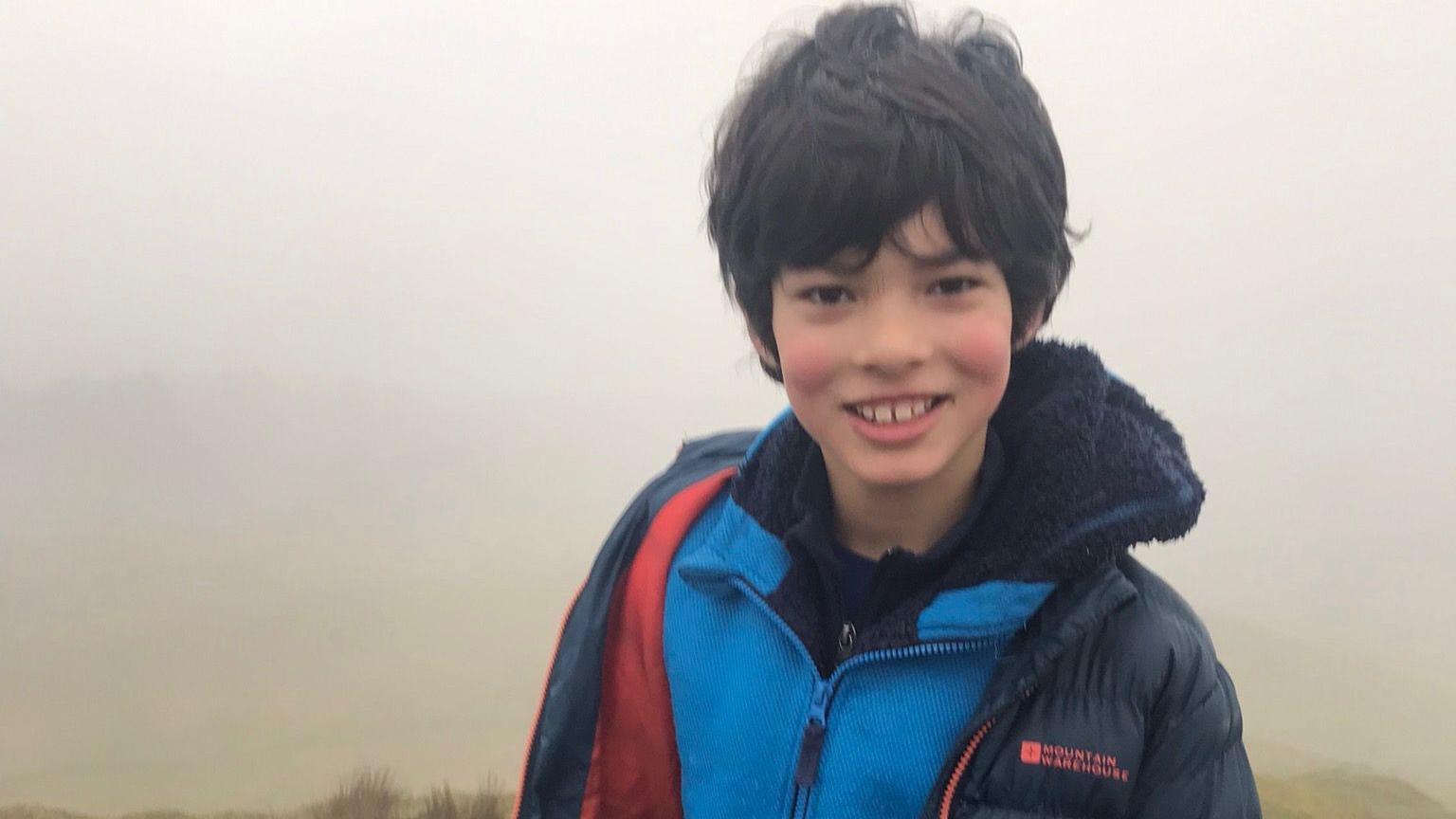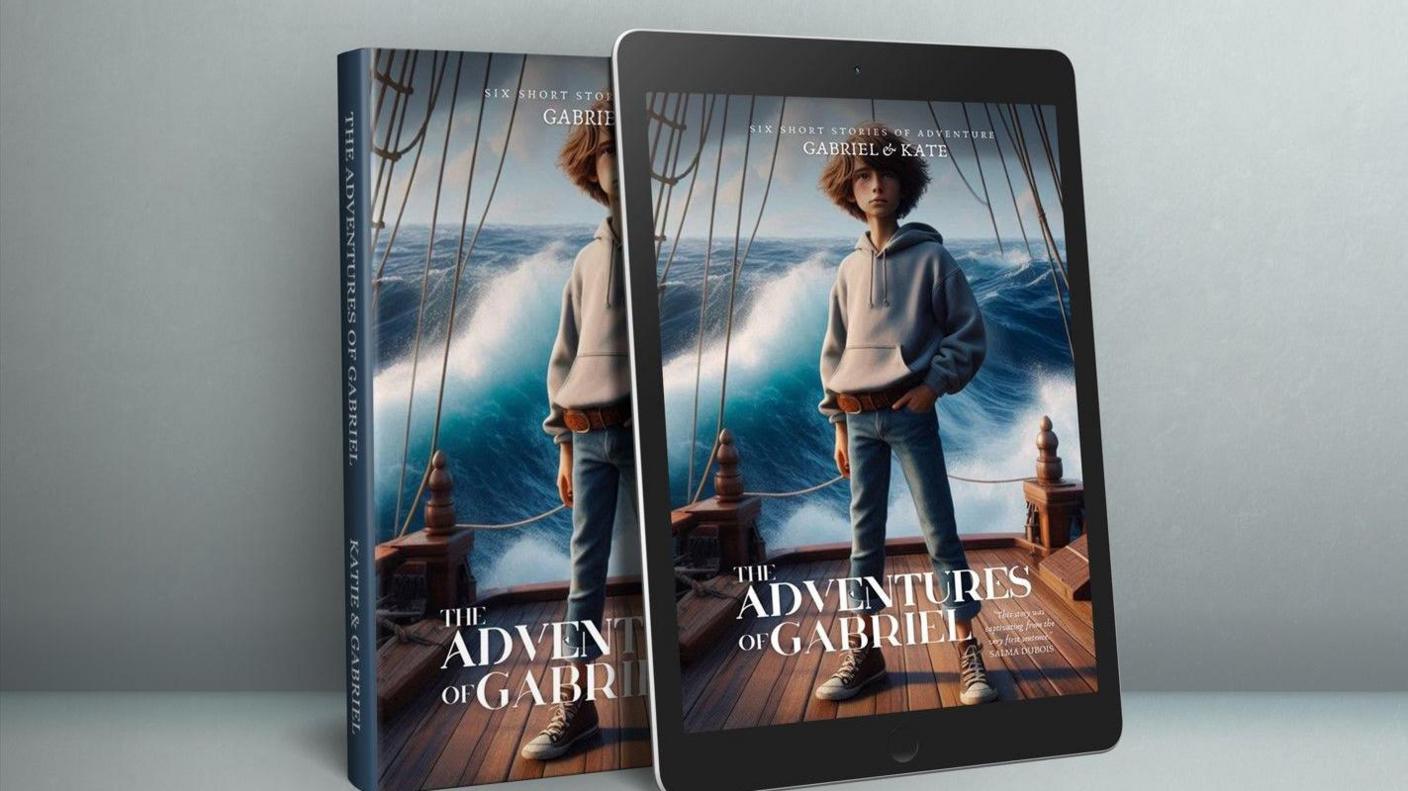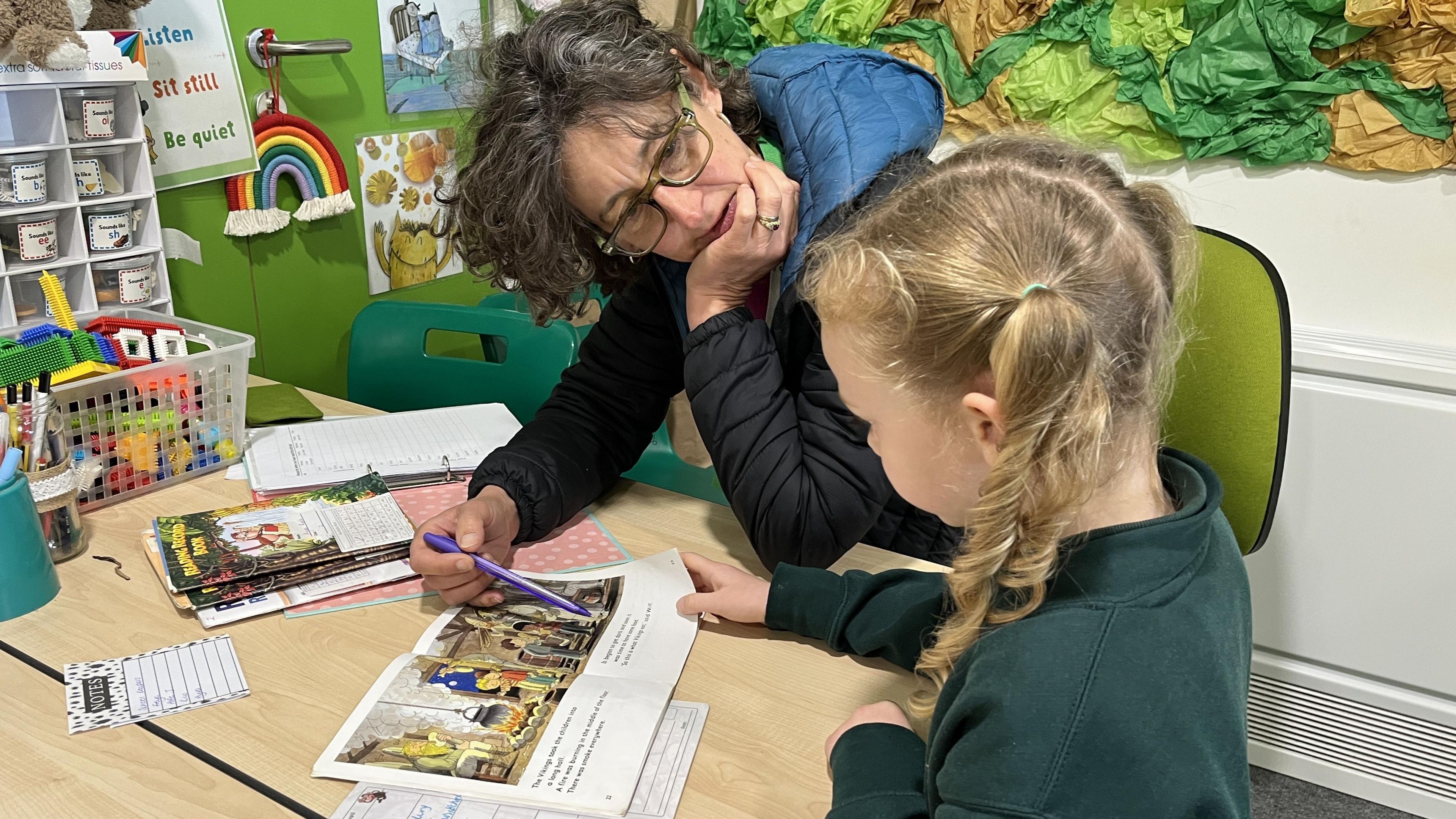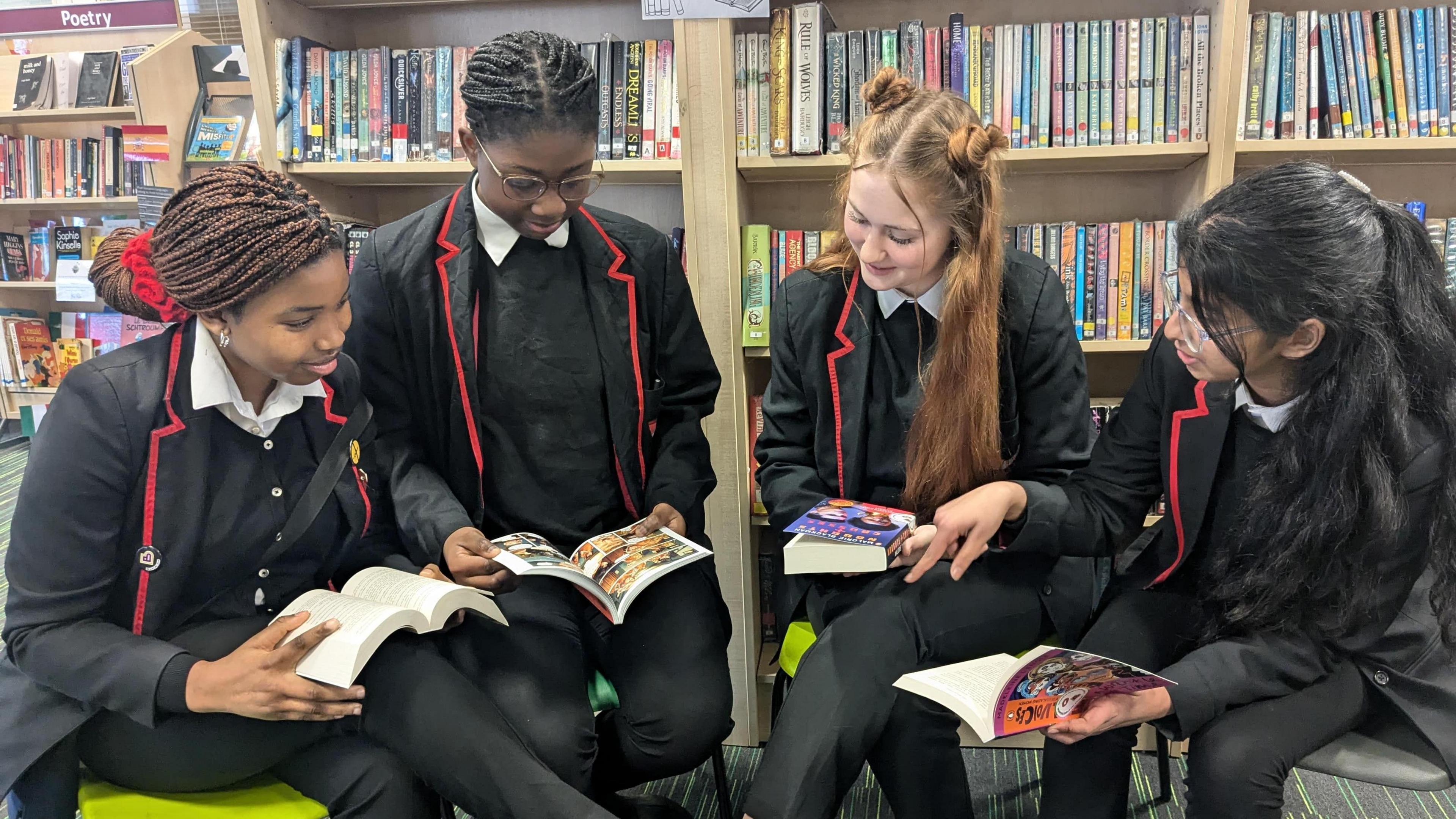Boy's storytelling method puts 'joy' back into literacy

Gabriel and his mum came up with the StoryQuest method while telling stories with each other
- Published
A mother and son's storytelling ritual is helping to transform how children learn to write and express themselves through their own stories.
Kate's 11-year-old son Gabriel, from Cheltenham, would tell her his story aloud as she took notes and it was later turned into a book - called The Adventures of Gabriel. The framework they used was trademarked as StoryQuest.
Kate said Gabriel is "proud" of how StoryQuest has since been inspiring others and hearing how they have been "slaying UFO's and beating dragons" in their own stories.
Thomas Hirst, a teacher at Dixon Manningham Primary School, in Bradford, said it has given his pupils, who often struggle with writing, "joy".

Teacher Thomas Hirst said it helped his pupils start "writing for pleasure"
StoryQuest is described as a therapeutic storytelling tool where the child relays a narrative, normally based on a hero, to someone who then actualises it into a fully formed story.
When implemented in schools, pupils share their story ideas with their class and write them down on a specialised sheet.
Mr Hirst said the method allowed his Year Six students to just focus on "enjoying using their imaginations".
"We sometimes forget about writing for pleasure and what that can do for our kids," he said.
"A lot of boys and girls have a fear of the blank page, you can do all of the teaching - but they sort of shut down when asked to write a story.
"[So] it was a really lovely experience to see them really joyful, talking about their stories - they loved it."
Mr Hirst has now built the method into his curriculum to be used every year.

Gabriel wrote a book with the help of his mum and his grandad who created the AI art for the characters
Kate described her role in her son's storytelling as like being her son's "ghost writer".
"He just began narrating and I scribbled notes and asked him to tell me more," she added.
"I then read it back to him and he would feedback his edits.
"It all got put into a word document and I showed it to Gabriel and he said 'it's a book. Mummy it's a real book'."

Kate said she was essentially her son's "ghost writer"
Since developing the method, Kate said it had been exciting to see how StoryQuest has been supporting pupils in building their confidence, emotional literacy, and writing skills.
"Gabriel is most proud of how his book and StoryQuest is inspiring other children," she said.
"He's enjoying other children collectively taking on literacy and writing for each other."
Kate and Gabriel now work together leading sessions with learning groups and pupils across the UK on how to use their StoryQuest method.
Get in touch
Tell us which stories we should cover in Gloucestershire
Follow BBC Gloucestershire on Facebook, external, X, external and Instagram, external. Send your story ideas to us on email or via WhatsApp on 0800 313 4630.
- Published1 April

- Published5 February
